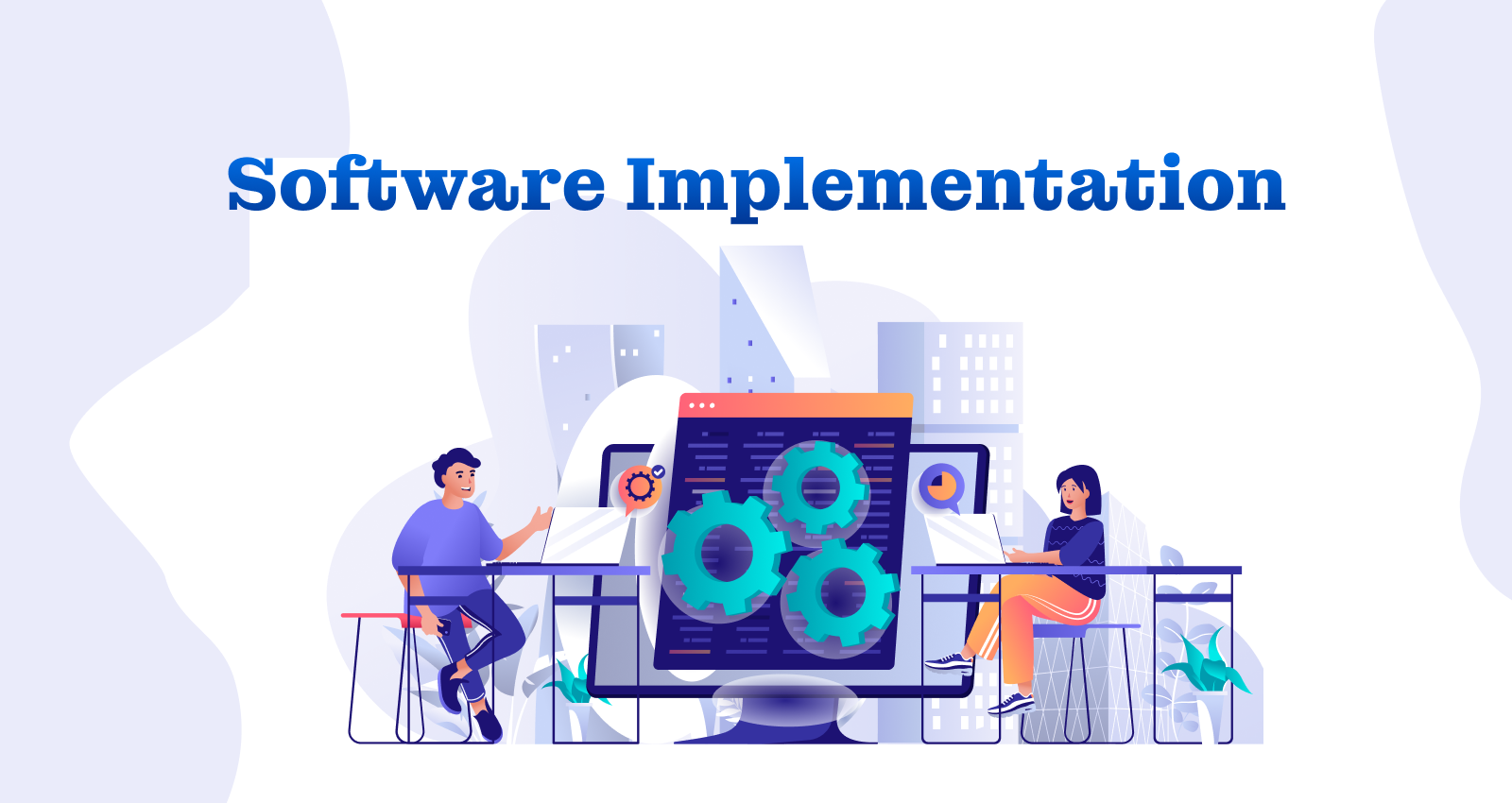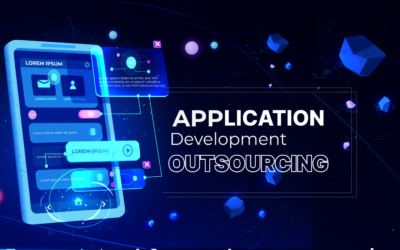8 Steps for Successful Software Implementation

Introduction
Implementing new software in your organization can seem like a daunting task. However, it can be a smooth and successful process with the right approach and careful planning. This guide will walk you through the essential steps for successful software implementation, explain what happens during the different phases, highlight why implementations sometimes fail, and provide tips for ensuring success.
What happens during a software implementation?
A software implementation process typically involves four main phases: pre-implementation planning, implementation, and post-implementation and evaluation. Each phase has specific tasks that ensure the software is successfully integrated and used effectively.
i) Pre-implementation Planning: Start by setting clear goals and objectives for the software implementation. Assess the current state of your organization and create a detailed plan for implementing the new software. Before moving forward, develop a comprehensive training program for your team.
ii) Implementation: Configure and install the new software in your organization’s existing systems during this phase. Ensure your development team is well-trained to implement and use the latest software effectively.
iii) Post-implementation: Focus on ensuring the new system is working correctly and addressing any issues. Continue providing training and support to ensure the new software is used successfully.
iv) Evaluation: Thoroughly evaluate the software implementation project to ensure it meets its goals and objectives. Regular assessments are crucial for making necessary adjustments and improving future software deployments.
What are the steps of software implementation?
The four phases of the modern software implementation process can be achieved following eight clear steps. Here’s a brief rundown:
Define the Scope and Objectives:
Before starting any project, it’s essential to identify the problem you’re solving. Determine the purpose and goals of the project. What specific objectives do you have? How will users interact with the software? What processes need improvement?
The first step in the software implementation process is defining the project’s scope. Understand what the software is intended to do, which features are required, and any limitations it may have.
Create a Detailed Project Plan:
After defining the project scope, you can develop a plan to implement the software. Knowing what questions must be answered allows you to create a strategy to achieve your goals.
A detailed project plan is crucial for successful execution. Effective project management is key. To design a successful implementation strategy, understand your specific goals, objectives, and users’ needs. Your plan should cover all aspects of the project, including the schedule, budget, resources, risks, and expected outcomes.
Gather Requirements from Stakeholders:
Understanding what the client wants and needs from the software is crucial. Gather requirements from various sources, including clients, users, stakeholders, and subject matter experts.
Use methods like interviews, focus groups, and surveys to collect requirements. It’s essential to involve all stakeholders to ensure their needs are accurately captured for the project’s success.
Once you’ve gathered the requirements, document and review them with the client to ensure they are complete and accurate before starting the coding process. The documentation should be clear and concise.
Select the Software You Need:
Choosing the right software is crucial for successful implementation. Consider cost, ease of use, and features to find the best fit.
When selecting new software, ask yourself: What do you want to achieve with this software? Which processes or tasks will it improve? Numerous software options can support your business operations, but how do you choose the right one?
Keep these points in mind:
- Ensure the software benefits your business.
- Avoid paying for unnecessary features.
- Confirm it provides the tools your team needs to stay productive.
- Choose user-friendly software to minimize training time.
Execute the Project Plan:
Once you’ve chosen the right software for your business, the next step is implementation. Assemble a strong team of professionals for the software implementation. Assign specific tasks to each team member or contractor, making sure everyone knows their responsibilities.
Executing your plan might seem daunting and time-consuming, but it doesn’t have to be. By using the right installation tools and processes, you can get your new software up and running quickly and efficiently.
Configure and Integrate Your Software:
Once you’ve executed your plan, it’s time to install and configure the new software. This can be done by your team or with the help of a software outsourcing partner. If you’re doing it yourself, follow all instructions carefully.
After installation, configure the software to meet your business needs and integrate it with your existing processes. With the right tools and techniques, you can get your new software up and running quickly and efficiently, even if you’re unfamiliar with the process.
Train and Adopt Your Software:
Ensure that everyone using the software, from administrators to end users, receives proper training for a successful implementation. Training is crucial for the success of any software implementation plan and can be done in various ways.
Assign several trainers to review and educate others on the software. Training can be conducted in person or online. Additionally, you can provide training through videos or guide materials, allowing users to learn at their own pace. These resources are valuable for understanding the program effectively.
It’s essential that the software meets users’ needs and is user-friendly. This encourages adoption, making it more likely for people to continue using the software long-term once they’re comfortable with it.
Go Live:
Launching your new software is time, but only if you’ve completed all the necessary pre-launch tasks! Communication with stakeholders is key—set clear expectations for what will happen before, during, and after the go-live date.
Ensure you have a solid plan for migrating data to the new system to maintain accuracy. Before launching, thoroughly test the new system to identify any potential issues before users start using it.
During the transition, be ready to support users who may need training or additional resources to feel comfortable with the new system. After the launch, monitor usage and performance metrics to identify areas for improvement based on feedback.
Support, Maintain, and Evaluate:
Successful software implementation requires ongoing support and maintenance. Software support involves fixing any issues or bugs that arise, while maintenance focuses on adding features and addressing low-priority bugs. It’s all about keeping the software running smoothly and meeting customer needs.
After selecting the right software for your business and implementing it, consider how often you’ll need to upgrade. For critical systems, staying up to date with the latest version is crucial for optimal performance.
Once the software is up and running, evaluating its performance is essential. Determine if it’s meeting your objectives, identify any issues, and find areas for improvement. If all pre-launch activities have been completed, it’s time to launch your new software.
What Are the Reasons a Software Implementation Might Fail?
Despite careful planning, software implementations can fail. Here are some common reasons:
- Lack of Clear Objectives: Without clear goals, it’s hard to measure success.
- Insufficient Planning: Skipping steps in the planning phase can lead to unexpected problems.
- Poor Training: If users don’t know how to use the software, they won’t adopt it effectively.
- Inadequate Support: Lack of ongoing support can lead to unresolved issues and frustration.
- Resistance to Change: Employees may resist new software, especially if they are comfortable with old systems.
What Makes a Successful Implementation?
Several key factors contribute to the success of a software implementation plan. Here’s what to keep in mind:
Don’t Try to Do Too Much: Set Realistic Goals: Set achievable goals to stay focused during implementation. Start small and gradually expand as you get more comfortable with the system.
Take Into Account Roadblocks: Expect some challenges along the way, regardless of how well you plan. Be ready to adapt as needed.
Regularly Communicate with All Stakeholders: Keep management, IT, and everyone affected by the change informed throughout the process.
Have a Plan B: Always have a backup plan in case something goes wrong. This could involve having someone on call to troubleshoot issues or establishing a contingency plan for reverting.
Continuously Test: Thoroughly test the software after installation to ensure everything works smoothly. Check for glitches and make any necessary adjustments before going live. Testing ensures a smooth transition to the new system.
Software Implementation Done Right
Successfully implementing software can be challenging, but following these eight steps can lead to success. It requires careful planning and execution, starting from defining objectives to going live and beyond.
Focus on your business’s needs, set achievable goals, and involve all stakeholders to ensure success. Implementing new software can be an exciting opportunity for growth with proper planning and execution, rather than a stressful experience.
By following these steps, you’ll be equipped to plan and execute smooth software implementations from start to finish.
Conclusion
Successful software implementation is a structured process that requires careful planning, execution, and continuous evaluation. By following these eight steps and focusing on clear communication, realistic goals, and regular testing, you can ensure your software meets your business needs and adds value to your organization. Remember, the key to success is not just in planning but also in the flexibility to adapt and respond to challenges along the way.
Are you looking for any IT Services such as Software Testing, Web design and Development, Professional/Staff Augmentation Services, Cloud Computing, Mobile App Development, Digital Marketing Services and more? Connect Stridefuture Technology, which helps to meet your requirements.
{StrideFuture Technology, a full-service company specializing in Software Solutions and Consultancy services. We specialize in Personal, Business, IT Services, Software Testing, Web design and Development, Mobile App Development, Digital Marketing Services, and much more you can dream Virtually with us! Reach out for more service at StrideFuture Technology.}









